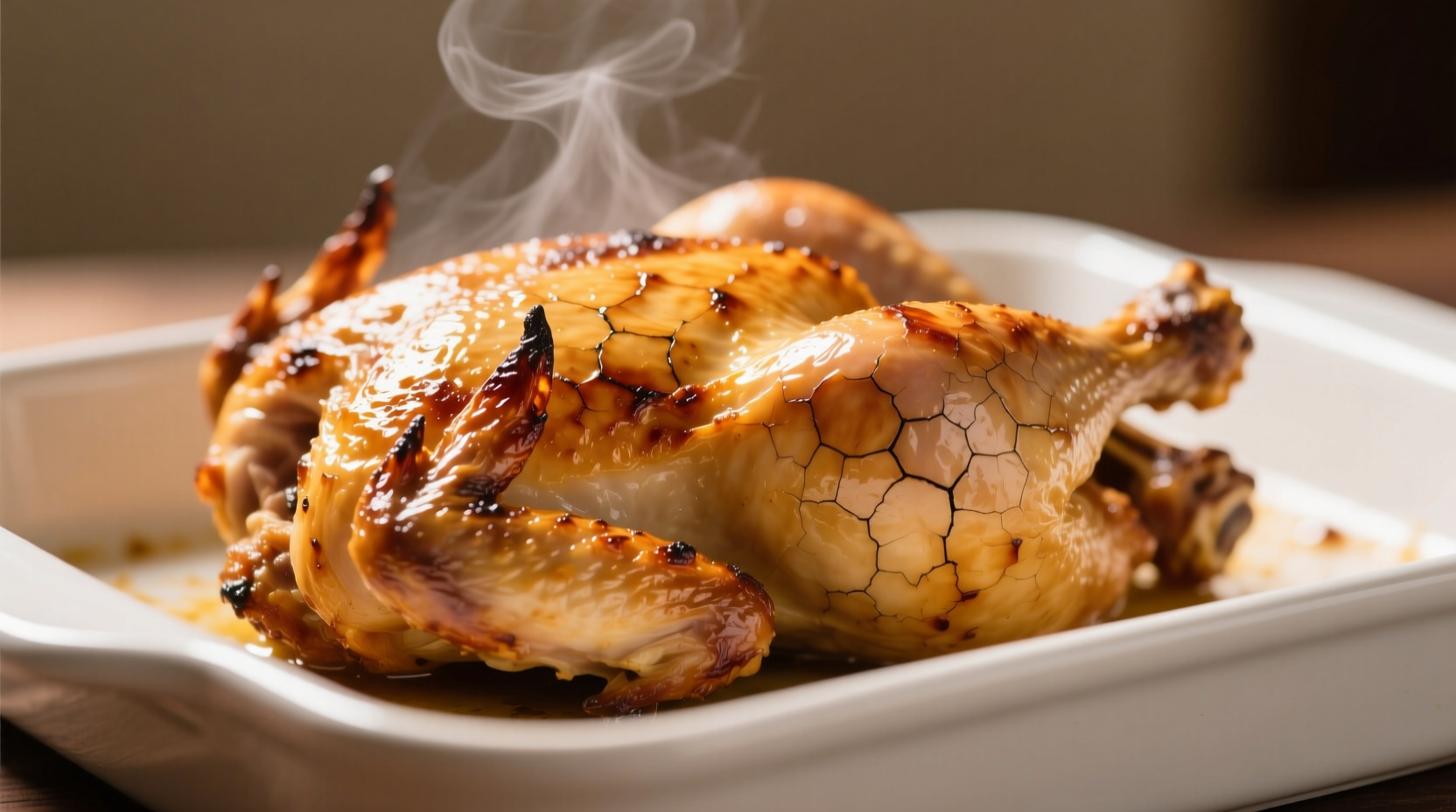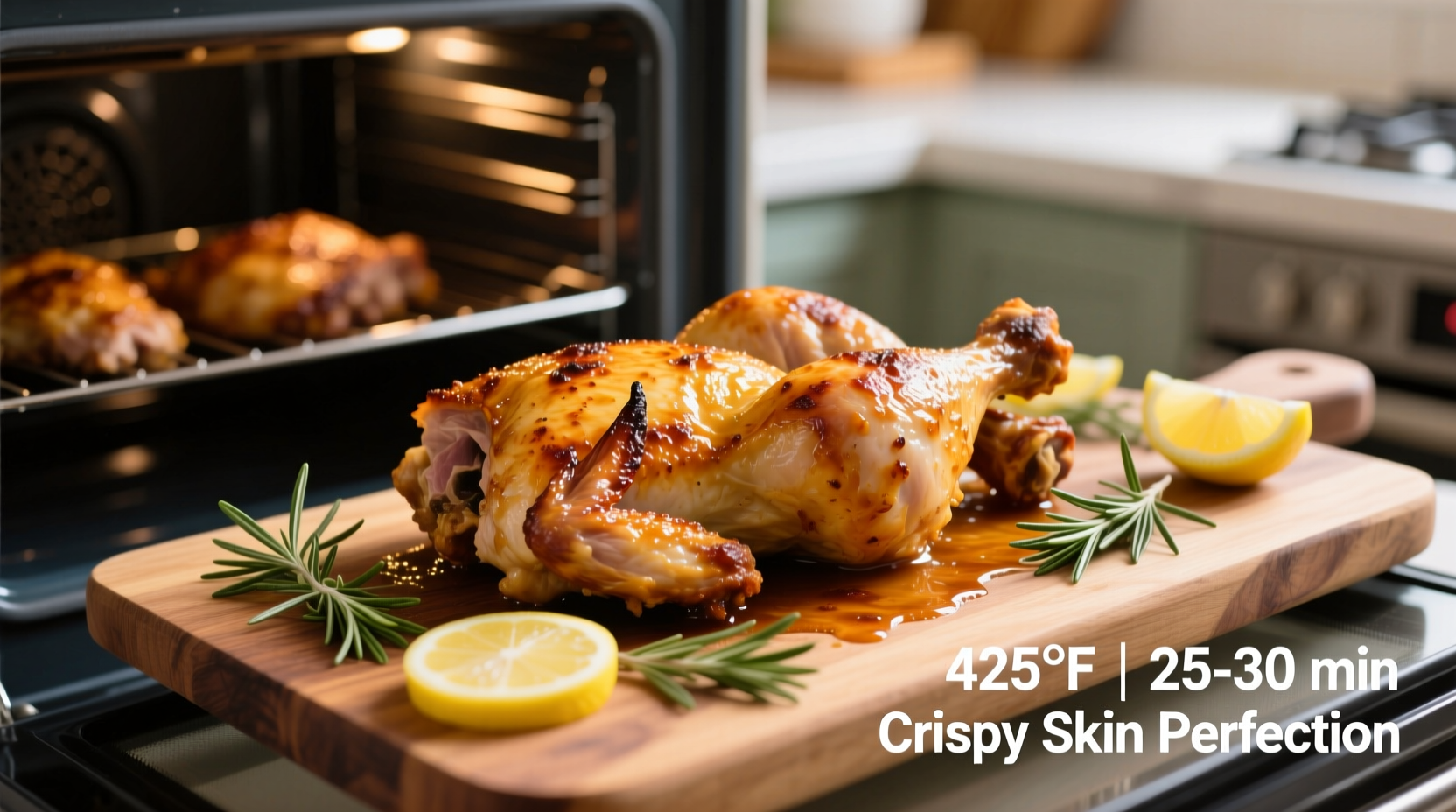Getting chicken thighs right in the oven requires precise temperature control. Unlike chicken breasts, thighs contain more fat and connective tissue, making them forgiving but requiring specific heat management for optimal results. This guide delivers science-backed cooking parameters with practical adjustments for your specific kitchen setup.
Why 400°F Is the Perfect Chicken Thigh Temperature
Food science explains why 400°F delivers superior results compared to lower or higher temperatures. At this sweet spot, three critical processes occur simultaneously:
- Fat rendering - Thighs contain substantial fat that melts at 350-400°F, basting the meat internally
- Maillard reaction - Surface browning begins at 310°F, creating complex flavor compounds
- Collagen conversion - Connective tissue transforms to gelatin at 160°F, tenderizing the meat
Lower temperatures (below 375°F) prolong cooking time, risking dryness as moisture evaporates. Higher temperatures (above 425°F) cause exterior burning before interior reaches safe temperature. The USDA Food Safety and Inspection Service confirms that poultry must reach 165°F internal temperature to eliminate Salmonella and Campylobacter pathogens (USDA FSIS, 2023).

Step-by-Step Cooking Process
Follow this professional kitchen-tested method for consistent results:
- Preparation (5 minutes): Pat thighs dry with paper towels - crucial for proper browning. Season generously with salt (1½ tsp per pound) at least 30 minutes before cooking.
- Oven setup: Position rack in upper third of oven. Preheat to 400°F with convection setting if available (reduces time by 10-15%).
- Cooking timeline: Place skin-side up on wire rack over baking sheet. Roast 25 minutes, then flip and continue 10-20 minutes until internal temperature reaches 165°F.
- Resting: Tent loosely with foil for 5-8 minutes. Temperature will rise 5°F during carryover cooking.
Variables Affecting Your Cooking Time
Several factors require adjustment to the standard timeline. Use this reference table for precise timing:
| Type | Weight Range | Time at 400°F | Visual Cues |
|---|---|---|---|
| Bone-in, skin-on | 6-8 oz | 38-45 minutes | Deep golden skin, juices run clear |
| Boneless, skinless | 4-6 oz | 25-32 minutes | No pink near bone, firm but yielding |
| Convection oven | All types | Reduce by 10-15% | Check 5 minutes early |
This data aligns with FDA Food Code recommendations for time-temperature relationships in cooking (FDA Food Code, 2022). Note that oven thermometers often reveal actual temperatures 25°F lower than dial settings - always verify with an independent thermometer.
Troubleshooting Common Issues
Dry chicken: Usually caused by overcooking or skipping the resting period. Solution: Remove at 160°F internal temperature to account for carryover cooking to 165°F.
Burnt skin: Occurs when oven runs hot or skin isn't properly dried. Fix: Start skin-side down for first 15 minutes, then flip, or tent with foil after 30 minutes.
Undercooked centers: Often happens with thick bone-in thighs. Prevention: Arrange thighs with thicker portions toward oven center, rotate pan halfway through cooking.
Pro Techniques for Better Results
Professional kitchens use these science-backed methods to maximize flavor and texture:
- Dry brine: Salt thighs 12-24 hours before cooking for deeper seasoning and moisture retention
- Temperature verification: Insert thermometer horizontally into thickest part, avoiding bone
- Fat management: Place thighs skin-side up on wire rack to allow fat drainage and even crisping
- Acid finish: Squeeze fresh lemon or vinegar over cooked thighs to balance richness
Food safety experts at the American Institute for Cancer Research emphasize that proper temperature control not only ensures safety but also preserves nutrients better than overcooking (AICR, 2024).
When to Adjust the Standard Method
Certain cooking scenarios require temperature modifications:
- Meal prep cooking: Reduce to 375°F for 45-50 minutes for more uniform doneness across multiple batches
- Crispy skin priority: Start at 425°F for 20 minutes, then reduce to 375°F until done
- Convection oven use: Lower temperature by 25°F and check 5-7 minutes early
Remember that oven calibration varies significantly. A 2023 Consumer Reports study found that 68% of home ovens have temperature variations exceeding 25°F from the set point, making an independent oven thermometer essential equipment.
Frequently Asked Questions
Can I cook chicken thighs at 350°F instead of 400°F?
Yes, but cooking time increases to 45-55 minutes. Lower temperatures risk drying out the meat as moisture evaporates during extended cooking. The USDA recommends minimum oven temperature of 325°F for poultry to ensure pathogens are eliminated before the exterior dries out.
How do I know when chicken thighs are done without a thermometer?
Check for clear juices when pierced with a fork (not pink), firm but yielding texture when pressed, and skin that easily separates from the bone. However, visual cues alone aren't reliable for food safety - the USDA states that 165°F internal temperature is the only safe indicator.
Why do some recipes say 160°F is safe for chicken thighs?
Chicken thighs can technically be safe at 157-160°F with proper holding time (30 seconds at 157°F equals same pathogen reduction as instant 165°F). However, the USDA maintains 165°F as the standard for home cooks to ensure safety without precise timing. Many professional chefs pull thighs at 160°F knowing carryover cooking will reach 165°F during resting.
Should I cover chicken thighs while baking?
No, covering traps steam which prevents proper browning and crisping. Only tent loosely with foil during the last 5-10 minutes if skin is browning too quickly. The exposed surface allows fat to render properly and creates the Maillard reaction essential for flavor development.
Can I cook frozen chicken thighs at 400°F?
Yes, but increase cooking time by 50% (55-70 minutes) and flip halfway through. The USDA Food Safety Inspection Service recommends checking temperature in multiple spots as frozen sections may cook unevenly. Never cook frozen thighs in slow cookers due to extended time in the danger zone (40°-140°F).











 浙公网安备
33010002000092号
浙公网安备
33010002000092号 浙B2-20120091-4
浙B2-20120091-4